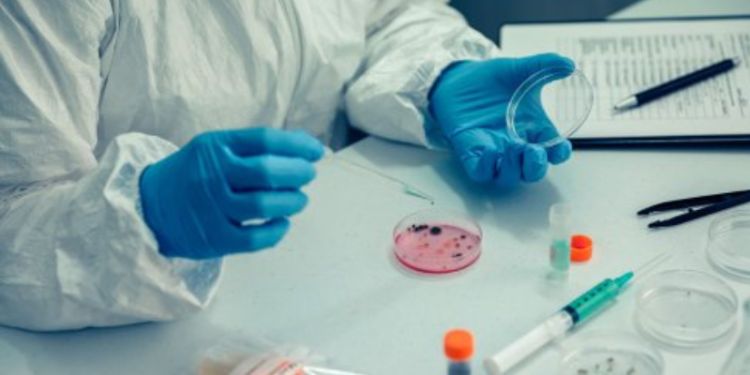‘Extremely deadly Salmonella variants in Africa are still barely treatable with antibiotics’ say scientists

An international network of researchers has unravelled genetic code of new and more dangerous Salmonella variants in Africa.
The two studies, which have been led by University of Antwerp in collaboration with researchers including those now based at University of Leeds, found that Salmonella variants are under-reported, but they often cause very severe infections.
Moreover, high degrees of antibiotic resistance have been observed in some cases, making such infections virtually untreatable in sub-Saharan Africa.
The findings, which have been published as part of two global genetic studies in the journal Nature Communications, each map a different and new Salmonella variant.
This was truly a feat, involving collaboration with colleagues from all over the world, including dozens of scientists from Africa, and bringing together a tremendous amount of genetic information
‘We also delved into historical bio-banks, which allowed us to include a wide range of samples, including some that were collected in the 1980s in what was then Zaire or that date from 1940 and have up to now been kept in the cellars of the Pasteur Institute in Paris. This wealth of genetic information made it possible to unravel the genetic lineage of these bacteria’.
Emerging Salmonella infections in sub-Saharan Africa
Non-typhoidal Salmonella is known to us for causing relatively mild gastrointestinal infections.
However, in some regions, Salmonella poses a much more dangerous threat: invasive non-typhoidal Salmonella disease, has emerged as a major cause of morbidity and mortality in sub-Saharan Africa. It’s estimated that there are 594,000 cases of this infection annually, with 14.5% of those resulting in fatality. However, it’s likely that these figures are an underestimation as monitoring of disease is infrequent.
Such infections with invasive non-typhoidal Salmonella are seen primarily in children under five years of age who are living in poor hygienic conditions, and who are also often malnourished or infected with malaria. Those Salmonella infections are associated with mortality rates of up to 20% in some cases. For example, up to hundreds of young children would die daily in Africa, and those invasive non-typhoidal Salmonella also appear to be particularly resistant to available antibiotics.
In the paper, ‘A genomic appraisal of invasive Salmonella Typhimurium and associated antibiotic resistance in sub-Saharan Africa’, scientists mapped DNA code of more than a thousand salmonella bacteria originating from across Africa to provide a helicopter perspective of its spread.
Dr Matt Bawn, Lecturer in Bacterial Genomics in the Faculty of Biological Sciences was involved in this research during his previous role at the Quadram Institute. He said:
A key finding of this work was that invasive strains – types more likely to cause disease - have emerged multiple times from strains that normally just cause mild symptoms.
“By computationally assessing the evolutionary context of changes in the bacteria’s genomes, we can try and understand how and potentially why this has happened.
“This will help us understand not just how to treat bacterial diseases but potentially also how to reduce their emergence in the future.”
Read the papers here:
Image credit: University of Antwerp.




